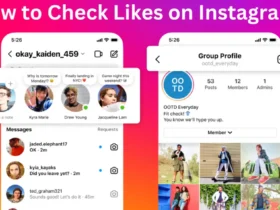Satisfaction from Start to Finish
The saying holds true: first impressions say a lot. This goes not just for individuals, but for businesses, too. Not only do customers gauge the service this way, but first impressions eventually set the tone for their overall experience.
Establishing good relationships with customers means getting it right from the very first encounter up to the end. In the healthcare experience, this starts off with setting meetings with patients. Here is where appointment reminders come in. For them to be satisfied and be loyal regulars to a business, it’s important that they show up to the first session.
Digital apps, such as Demandforce, have an automated way of reminding patients of their scheduled consultations. Many areas involving healthcare have kept pace as digital tools pave the way for automating routine tasks and mechanisms, and in doing so, has made the healthcare experience more convenient not just for physicians, staff but, of course, the patients.
But why the need to acknowledge patient satisfaction? Here are ways patient satisfaction helps the business:
1. Let’s Start with Schedules
When thinking about a patient’s overall experience, consider the matters that occur prior to their actual visit. After all, their experience is not limited to the four corners of a clinic, but it also includes the scheduling that happens either online or through front-desk staff.
Patients would choose a provider whose booking system is most convenient. It’s only reasonable to go with what’s easier, faster, and more straightforward. Anything inconvenient could potentially discourage the patient from proceeding, and that is one less client to serve.
Implementing an efficient and seamless appointment management system plus having a user-friendly platform helps in increasing the patient’s contentment with the service. Surely, they would appreciate knowing which day and time would be best to book the appointment.
In time, these patients might even choose to book an appointment with the clinic for their routine check-ups, and what business doesn’t want to retain their customers?
2. Showing Up and Being Present
Consultations can definitely be nerve-wracking for the patient, especially if the symptoms could point to a severe diagnosis. Many patients could think of backing out. On the other hand, patients also have a tendency of forgetting about their scheduled appointment due to a lack of reminders.
Either way, having a lot of no-shows can be detrimental to the business. For the business to thrive, there must be patients that arrive. Apart from losing forecasted revenue, some instances can also be a botch on resource allocation. Sustained no-shows might even lead to reduced staff morale.
To address this pain point, there have been automated notifications that function as staggered prompts reminding the patient to show up for the appointment. There are digital tools that allow easier contact with patients through response templates and automatic reminders. Moreover, by being in contact with the patients, they get to feel how valued they are by the clinic.
3. Satisfied with Service
Everyone enjoys a service where they feel highly valued and cared for. The moment a patient steps inside the medical practice or hospital, front-desk personnel greets and accommodates their needs. Physicians, too, can create a bond with the patient, which is quite necessary particularly if they hope to earn the patient’s trust.
The same goes for Telemedicine. Operating a patient-centered clinical practice isn’t strictly for services done in person. Sure, the session is done virtually, yet the need for delivering high-quality service remains the same. Although there’s no denying that it’s a different context, patients still mostly look for similar standards for service delivery: the approachable staff, attentive physicians, and promising medical results from their checkups.
Patients might not always remember the amenities available nor will they recall how grandiose the place was, but they will certainly remember how patient-centered service has made them feel. Customers are expected to be sensible especially when dealing with delicate matters such as health, and they will reasonably support a service that they know is impressive.
4. Coming Back
Naturally, satisfied patients would come back for a second visit and, should the superb experience be continuous, they might even be loyal customers.
Businesses can build a reputable image especially when it comes to customer satisfaction. In addition to having regular patrons, those who are pleased with the service are more likely to rave positive reviews passed on through word of mouth that could boost the clinic’s exposure and help in growing the business. A happy patient would only recommend a clinic that’s given them a happy experience. Consider it as free marketing for the business!
Picture a clinic, complete with the staff, doctors, and the patients for the day. Clearly, it’s in everyone’s best interest to put the effort into making the patient’s experience go as smooth and easygoing as possible. Truthfully, there’s nothing to lose in giving the best service.








Leave a Reply